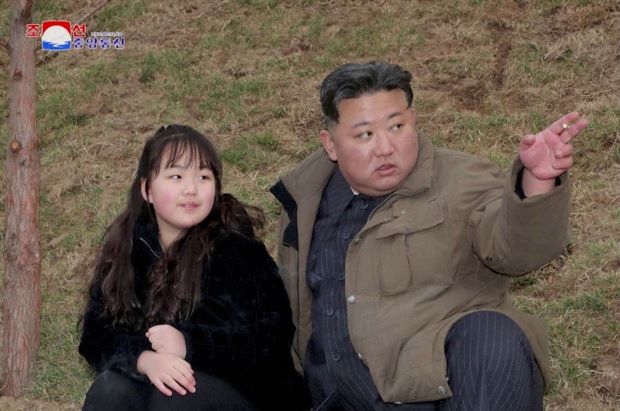North Korea says it launched a solid-fuel ICBM, a first

By Choe Sang Hun
SEOUL — North Korea said Friday (14) that it had test-launched a solid-fuel intercontinental ballistic missile for the first time, technology that would be a significant step forward for its missile program if developed successfully.
The launch Thursday (13), off the North’s east coast, was reported at the time by South Korea’s military, which said only that it had been an intermediate- or long-range missile. On Friday, the North’s state media said it had been a three-stage Hwasong-18 ICBM, a new model with solid-fuel technology.
A solid-fuel missile is easier to hide and transport, and it takes less time to prepare one for launch. That makes it harder to target in pre-emptive strikes than the North’s Hwasong-14, -15 and -17 ICBM models, all of which use liquid propellants. After further analyzing data from the launch, South Korea confirmed Friday that the missile was a solid-fuel ICBM, but said the North would “need more time and effort before completing its development”.
Kim Jong-un, the North Korean leader, said he would create “a clearer security crisis” for the United States and its allies by escalating the North’s nuclear capabilities in the face of growing military cooperation between Washington and Seoul, the North’s state media report said Friday.
Analysts had suspected that North Korea was developing a solid-fuel ICBM, and Kim had vowed to add it to its growing nuclear arsenal. But until Thursday, North Korea had never launched one.
In December, North Korea said it had tested a powerful new solid-fuel ICBM engine. After that test, Kim urged his engineers to build a solid-fuel ICBM “in the shortest span of time”. A military parade in Pyongyang, the North’s capital, in February included a record number of ICBM launchers, including one that looked as if it was designed for a solid-fuel missile.
Photographs released by state media Friday appeared to show Kim watching, his young daughter by his side, as the new launcher rolled out from a concrete tunnel into an open field and fired the Hwasong-18.
According to one of the secret Pentagon documents leaked in recent weeks, US intelligence officials judged that “because of testing hurdles and resource constraints,” the North would probably not be able to outfit all of the ICBM launchers it displayed in the parade with operational missiles that could strike the continental United States — at least during the next year.
But on Friday, the North’s state-run Korean Central News Agency said the country was pressing ahead with testing its new ICBM.
It said that the thrust power of the Hwasong-18 had been dialled down Thursday and that the missile had been launched at a deliberately steep angle to ensure that it did not fly over Japan.
As the missile hurtled to the east, Japan issued an alarm in its northern island of Hokkaido, urging residents to seek shelter. It later retracted the evacuation order, saying that the missile had fallen into waters well west of Japan.
North Korea last launched an intermediate-range ballistic missile in October. It flew over northern Japan, triggering alarms and prompting people there to seek cover. North Korea has since launched several powerful ICBMs.
The test Thursday came three days after Kim presided over his ruling Workers’ Party’s Central Military Commission. During that meeting, he said the country should expand its weapon capabilities “with increasing speed” and in a “more practical and offensive” manner.
In the past week, the North has failed to answer routine daily calls on military and government hotlines that it shares with South Korea. The hotlines are meant to establish a channel for dialogue and prevent accidental military clashes. The North has sometimes stopped answering the South’s calls to protest matters such as UN sanctions or the South’s joint military exercises with the United States.
The United States and South Korea expanded those military drills this year in the face of the North’s accelerated weapons development. The North has staged 12 rounds of missile tests since January.
North Korea has recently claimed to have simulated nuclear attacks with short-range ballistic missiles, strategic cruise missiles and “underwater nuclear attack drones.” It released photos of mid-air and underwater explosions that it said were caused when it detonated mock nuclear warheads.
On March 27, it also released photos of Kim inspecting what looked like a small, standardized nuclear warhead module that could be mounted on various missiles.
It was unclear whether that module included an operational nuclear warhead. Analysts say the North has never tested a miniaturized warhead, although it has conducted six underground nuclear tests since 2006. Its last nuclear test was in 2017; the United States and South Korea have said for more than a year that the North could carry out another one at any time.
-New York Times


Comments are closed, but trackbacks and pingbacks are open.